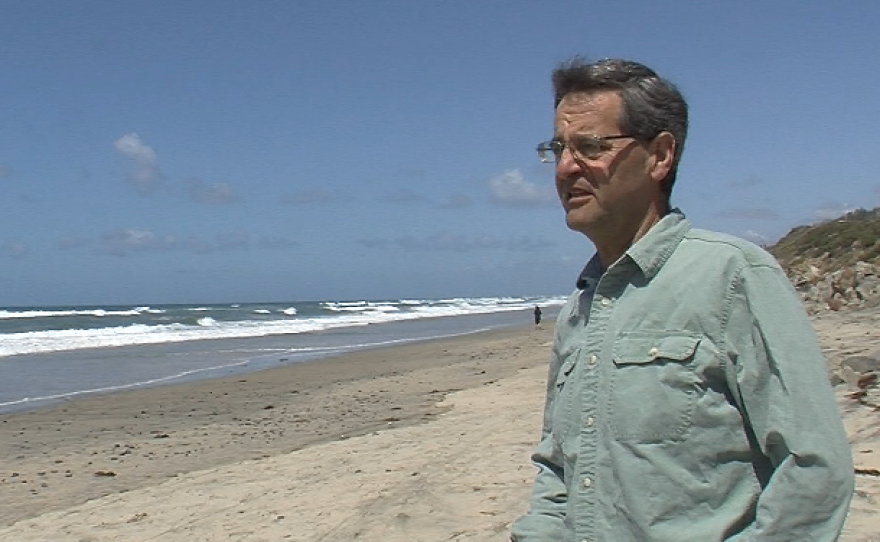Using offshore sand to replenish shrinking beaches can mitigate coastal erosion and keep high tides at bay. But beach replenishment can also harm coastal invertebrate populations, according to a new UC San Diego study.
The research focused on the effects of a major San Diego County beach replenishment project launched in 2012.
As part of the project, the San Diego Association of Governments (SANDAG) moved 1.5 million cubic yards of sand onto eight beaches from Oceanside down to Imperial Beach. But at each replenishment site, SANDAG left certain stretches of beach untouched.

UC San Diego biologist Joshua Kohn and his colleagues saw a perfect opportunity to study the effects of beach replenishment.
They collected samples from the replenished and non-replenished beaches by digging into the sand and looking at the invertebrates dwelling there. The researchers monitored a wide variety of species including bean clams, small marine worms and the kinds of sand crabs kids often like to dig up near the water.
The researchers found much fewer invertebrates in samples taken from replenished beaches. Kohn said replenishment had a surprisingly long-lasting effect on these populations.
"Even after 15 months, the abundance of invertebrates in replenished portions of the beaches was slightly less than half that in the control portions," Kohn said.
Kohn said these invertebrates provide a source of food for shorebirds and fish. SANDAG maintained important foraging grounds for coastal predators by leaving certain stretches of beach unreplenished, he said.
Kohn hopes biological impacts will be considered when new beach replenishment projects are discussed.
"It's thought that white, sandy beaches contribute to the tourist industry. And that's a very big component of our economy," he said. "Those forces need to be weighed against potential biological harm."
Kohn said more research is needed to find out whether bird populations are reduced by beach replenishment, or if the birds manage to adapt and find food elsewhere.






